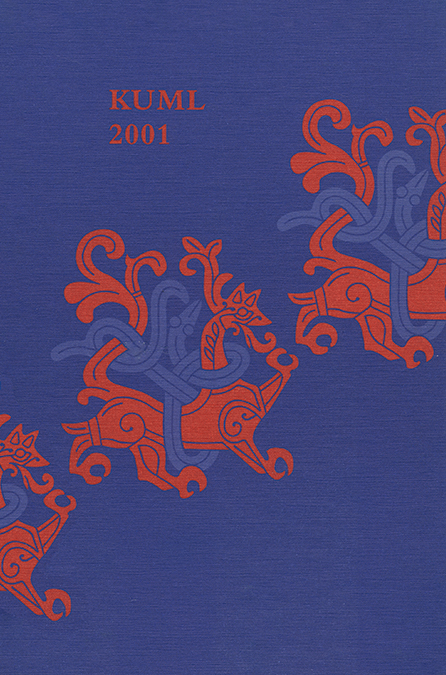Illerup – mellem Nordkap og Nilen
DOI:
https://doi.org/10.7146/kuml.v50i50.103161Nøgleord:
Illerup ÅdalResumé
Illerup – between the North Cape and the NileFor fifty years, Forhistorisk Museum in Århus and later Moesgård Museum has provided the base for the work with the finds from the river valley of Illerup, which were first published in Kuml 1951. The excavations are long since finished and in a few years the whole find will be published and accessible to the public in an exhibition.
In the search for explanations and parallels to the army equipment we have covered much ground, and what might have become a catalogue of finds with selected illustrations has developed into a study of the ancient world in the centuries around the beginning of the Christian era. It is already obvious that the scholarly adaptation so far is merely the beginning of investigations to which the only limit is our imagination. Analyses of the numerous artefacts have for instance taken us to Rome, where triumphal arches and other monuments boast weapons and belt outfit corresponding to the artefacts from the wetland areas of Southern Scandinavia (figs. 1-4).
Other items have their parallels in Syria, Africa, or Northern England, and an overall evaluation shows that the Illerup find holds elements that reflect the culture in vast areas, Roman and Teutonic (figs. 5-10).
According to the plan, the presentation and discussion of the topics that are naturally connected with certain find groups will be finished within a few years, and only then will it be possible to tackle the investigations into the more delimited problems, which have so far arisen from the work in progress.
One example of this could be the DNA analyses that have developed in such a way during the last few years that they can be used for biological material from the wetland finds. Also, metallurgic investigations of iron and precious metal analyses have been initiated. While working with the shields, the wood of both boards and handles were identified, and the results caused the planning of supplementary studies, using for instance dendrochronology. Investigation into the textile remains of the find are also expected to yield new information. The results of recent bog find research may be used successfully in new analyses of bog finds from the 19th century. Engelhardt’s publications – outstanding as they might be – are subjective in as far as Engelhardt, according to contemporary criteria chose the finds that were to be described or depicted. The selection is not representative and has led to wrong in terpretations of the find contents. These im balances should now be corrected and the old bog finds made accessible in a satisfying manner, i.e. published and republished according to modern standards. As it has also turned out that the knowledge of the preservation conditions of the same finds is limited, future work should include investigations into the present state of the find sites.
To solve the tasks mentioned through international cooperation, we are now planning a centre for Iron Age research at Moesgård, where from 2003 we can exploit an established network of scholars involved in the study of the Iron Age.
Jørgen Ilkjær
Moesgård Museum
Translated by Annette Lerche Trolle
Downloads
Publiceret
2001-08-01
Citation/Eksport
Ilkjær, J. (2001). Illerup – mellem Nordkap og Nilen. Kuml, 50(50), 187–204. https://doi.org/10.7146/kuml.v50i50.103161
Nummer
Sektion
Artikler
Licens
Fra og med årgang 2022 er artikler udgivet i Kuml med en licens fra Creative Commons (CC BY-NC-SA 4.0).
Alle tidligere årgange af tidsskriftet er ikke udgivet med en licens fra Creative Commons.


